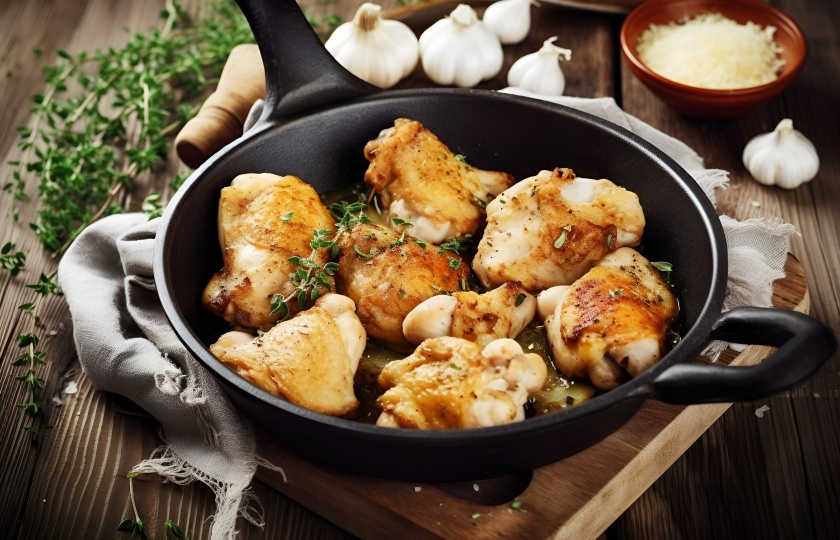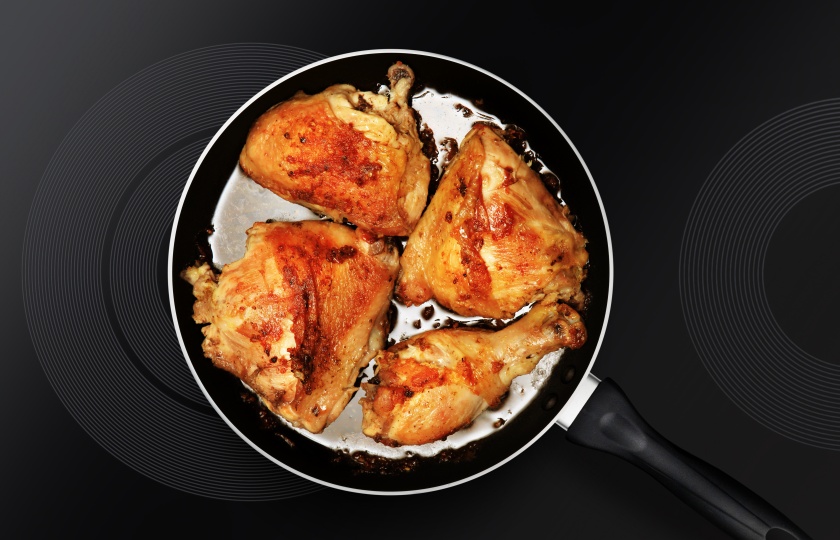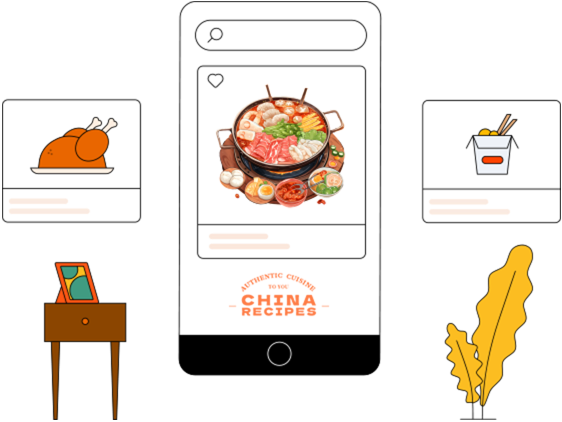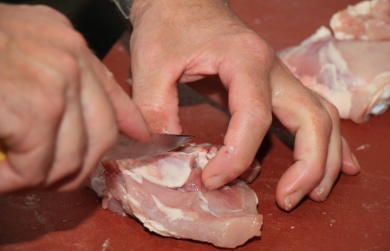Cooking Time Tips: How Long to Cook Chicken Thighs on Stove Top

Chicken thighs are one of the most popular cuts of chicken, juicy and delicious, but when cooking on the stovetop, many share a common question: how long until they're just right?
How long does it take to cook chicken thighs on top of the stove?
The cooking time for chicken thighs on the stove depends on the cooking method. The key is whether you prefer a crispy or tender and soft result.
Bone - in and Skin - on Chicken Thighs
Pure frying: 4 minutes on medium - high heat for each side, a total of 12 minutes (crispy skin and tender meat).
Frying followed by simmering: 5 minutes of frying + adding half a cup of water, covering the pot and simmering for 15 minutes (the bone can be easily removed).
Boneless Chicken Thigh Meat
Quick frying over high heat: Cut into pieces, 2 minutes for each side, a total of 6 - 8 minutes.
Gentle frying in one piece: 3 minutes for each side, then turn off the heat and cover the pot for 5 minutes.
What temperature should I cook chicken thighs on stovetop?
When putting the chicken thighs into the pan, the temperature in the center of the pan: 180 - 190°C.
The average temperature inside the pan during the turning - over and simmering stage: 150 - 160°C.
The temperature along the edge of the pan during the final crisping stage: 200 - 210°C.
If you don't have a thermometer, here's a method I often use: Sprinkle a few grains of salt into the pan. If the salt grains instantly turn brown and start to pop, it means the temperature is over 200°C (this is only suitable for the final skin - crisping stage).
When frying bone - in chicken thighs, I will apply a little butter at the joint. It can not only help judge the cooking doneness - when the butter completely melts and starts to foam (at about 150°C), it indicates that it's time to turn the chicken over.

Should I remove the skin before cooking chicken thighs?
It's better to keep the skin when frying or roasting, but it's better to remove the skin when stewing or boiling.
Three situations where you should keep the chicken skin
When frying or roasting, the chicken skin can form a crispy outer crust, locking in the meat juices. I usually put the chicken into the pan with the skin side down, using its own fat to fry out a crispy crust.
When making Southeast Asian - flavored dishes (such as Thai coconut chicken), the chicken skin can absorb the oil and spices, making the flavor more intense.
When making shredded chicken with bone - in chicken thighs, the subcutaneous fat can keep the meat moist, and the meat won't become dry even after cooling.
Two scenarios where it is recommended to remove the skin
When making soup or braising: Prolonged stewing will make the chicken skin tough, and the soup will also seem greasy. Tearing off the chicken skin in advance will result in a clearer soup after stewing.
When preparing fitness meals: Every 100 grams of chicken thighs with skin contains 80 more calories than those without skin. Removing the skin makes it more suitable for the fat - controlling period.
How do you know when chicken thighs are fully cooked?
The safe temperature for chicken thigh meat is 74°C.
Insert a probe into the center of the thickest part of the meat (avoiding the bone). Remove it from the heat immediately when this temperature is reached.
When frying or roasting with skin, it is recommended to insert the thermometer horizontally from the side to avoid piercing the skin and affecting the crispness. If making stewed dishes, stir the thermometer after insertion to eliminate the interference of the soup.
Actually, using a food thermometer is the most accurate method. Since many people don't have professional tools at home, here are some practical methods:
First, look at the bone root
At the root of the bone of a fully cooked chicken thigh, it turns grayish - white, and the cartilage becomes translucent. Poke near the bone with a chopstick, and the juice flowing out should be completely clear without any pink.
Pinch the bone and gently twist it
Wear heat - resistant gloves and pinch the bone and twist it gently. The fully cooked meat will fall off automatically. If it's not fully cooked, the meat will stick to the bone and feel sticky when pulled.
Touch - pressure and rebound test
Press the thickest part of the chicken thigh with a spatula:
For fully cooked meat, it will slowly bounce back when pressed.
Meat that is not fully cooked feels like raw plasticine, and the indentation will not disappear for a long time.
Overcooked meat is stiff and has no elasticity.

How do you prevent chicken thighs from sticking to the pan?
Choosing the right cookware is the foundation of success
A cast - iron pan or a stainless - steel pan is more suitable for frying skin - on chicken thighs than a non - stick pan. The key lies in preheating the empty pan - dry - heat it over medium heat for 2 minutes. When a drop of water can remain intact and roll quickly, it indicates that the optimal temperature has been reached.
Don't skip the pre - treatment of the chicken skin
After thoroughly drying the surface with kitchen paper, brush a thin layer of cooking oil on the chicken skin. This is more effective in preventing sticking than pouring oil directly into the pan.
The tool for turning the chicken affects success or failure
Abandon chopsticks and use a flat - headed tong instead. When turning the chicken, gently lift a corner with the tip of the tong first. If there is slight sticking, immediately tilt the pan to let the hot oil flow to the sticking area. Usually, it will separate automatically within 5 seconds.
Is it better to cook chicken thighs in the oven or on the stove?
Personally, I still prefer to fry chicken thighs on the stove. Here are three reasons for recommending frying:
Better crispiness: The chicken skin fried in a cast - iron pan at 190°C has an amber - colored honeycomb - like crispy crust. The oven can only barely approximate this by using the broiler function additionally.
More thorough extraction of bone marrow aroma: When frying bone - in chicken thighs, the bones are in direct contact with the high - temperature metal, releasing more umami substances than when using the oven.
Greater room for remedies: If you find that the heat is too high halfway through frying, you can immediately remove it from the heat to cool down. Once the oven is set wrongly, opening the door will cause the heat to dissipate instantly, making the meat drier.
Of course, the oven is not useless. When you need to cook a large quantity, using the oven is more worry - free.























